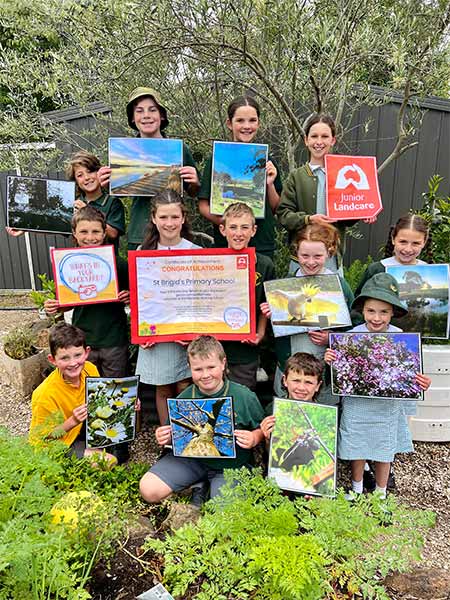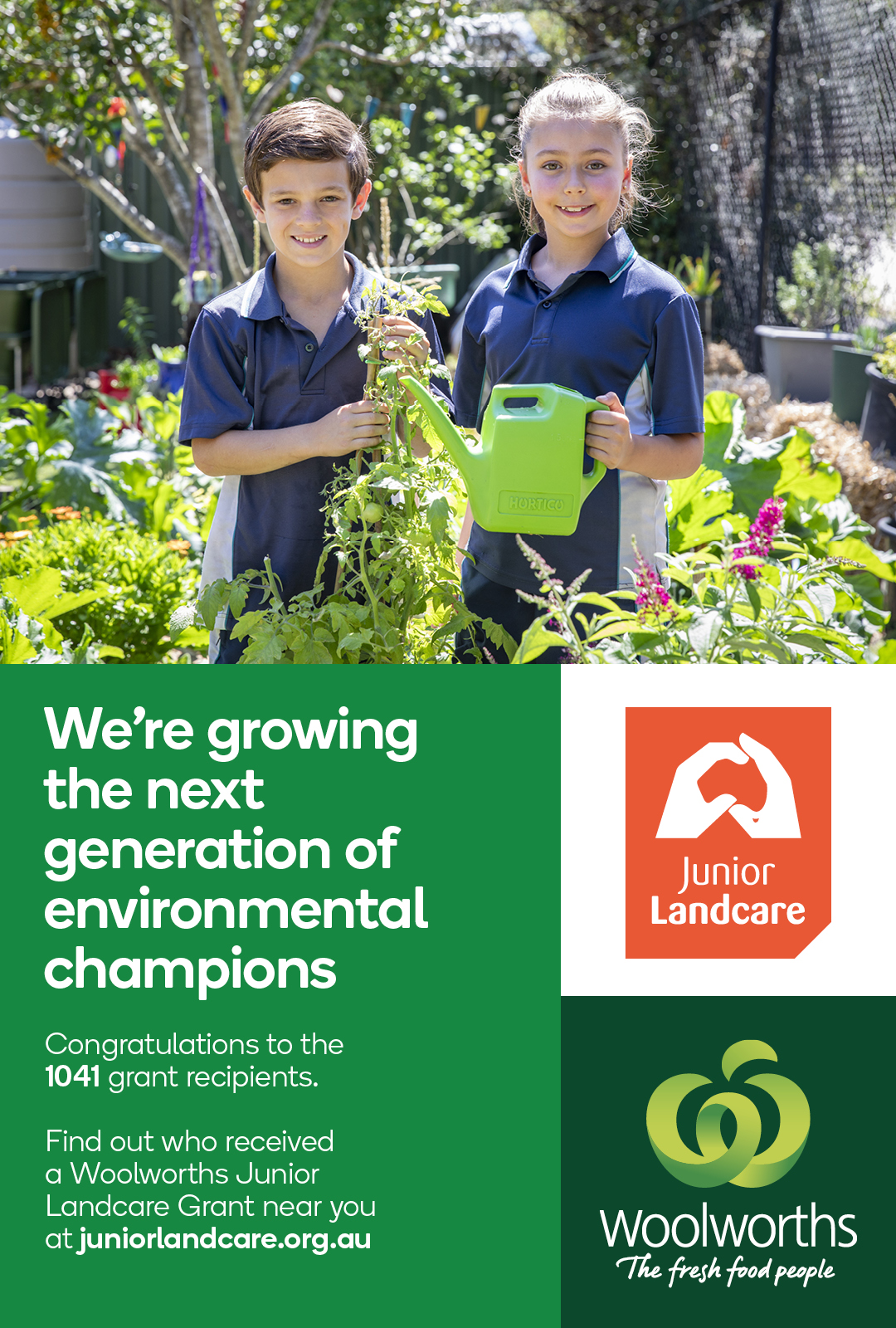News

Thanks to a record number of entries – from almost every student at the school – and amazing descriptions that accompanied each and every photo, St. Brigid’s Primary School in Gisborne, Victoria, was named the winning school in the ‘What’s in your backyard?’ photo competition with Costa and Junior Landcare.
We spoke with St. Brigid’s sustainability teacher Emma Barker, who submitted the entries on behalf of the students for tips on engaging students with the environment around them and what she discovered by taking part in the ‘What’s in your backyard?’ campaign:
Q: What are some of the environmental projects you have set up at your school?
Since the beginning of our sustainability program at St. Brigid’s four years ago, our community has totally transformed aspects of our outdoor environment. Some of the larger projects include establishing garden beds for growing our own produce, planting fruit trees, creating a herbal tea garden and a bee and pollinator attracting garden, building a yarning circle with surrounding indigenous or bush tucker plants, establishing a ‘World of Worms’, creating a new classroom rubbish/recycling system, installing a greenhouse as well as an outdoor classroom for sustainability sessions, which include cooking using our produce. Students were also involved in the designing, construction and installation of a Japanese inspired garden.
Upon reflection, the number of physical projects the students have undertaken and been involved in developing is too large to list, as there are also weekly projects we do to help enhance our outdoor learning space and connect to sustainable use of resources or practices, in some way.
To say we are proud of the students’ contributions to each of these projects is an understatement. Without their enthusiasm and their willingness to put in the hard physical work to complete these projects, we would not have made such inroads into enhancing our outdoor learning space. It is their interests and passion that continue to inspire and drive the changes, supported by our wonderful staff and families.
Our learning around the sustainable use of our precious resources and our responsibility to be changemakers in our daily actions and thinking, has also been tremendous. Part of this has involved being inspired by Australia’s First Nations people’s connection to the environment and how we can learn from this love, respect and knowledge for caring for our country so sustainably.
Q: What are your top tips for other teachers wanting to do the same?
My top tip is to appreciate and respect the contributions of your community. None of these changes in our school environment or thinking can occur without the willingness of students, staff and families alike to contribute and make the changes. Their attitudes, enthusiasm, passion, support and belief have been the driving force and catalyst by which we have been able to make so many changes throughout this time. Our sustainability program is a constantly evolving and adapting concept. We engage countless learning dispositions on a daily basis in our undertakings and learning. We have had to be patient, resilient, problem solvers, creative and collaborative – and for me, it’s all these changes that bring about opportunities for learning and growth. This makes all the time invested in researching, planning, preparing for and organising different projects within our program, worth the effort because of the rewarding outcomes and positive impacts that result.
The reason for all of this change and action is so that students can be involved in and inspired to care for our environment. All of the changes we have made at St. Brigid’s are driven by developing this connection to the world around us and to build a love and appreciation for our natural environment and how to care and maintain it for future enjoyment and health. We want students to know that they are changemakers; that their little daily actions and thoughts always make a difference to our world. These key elements therefore need to always remain at the forefront and remain the constant goal and focus of our program.
Q: What inspired you to enter ‘What’s in your backyard?’
The premise of the ‘What’s in your backyard?” concept was to stop and reflect on just how inspiring nature is to each of us and to recognise how fortunate we are to have this beauty surrounding us in such close proximity each and every day. Connecting to nature has the power to change and impact our mood and emotions, and we loved that this competition provided another opportunity to build a love and recognition of how important nature is to our daily lives. If we highlight the impact nature has on our wellbeing, health and happiness then it continues to help build the drive and willingness to protect and care for our environment.
Q: What did you and your students enjoy most about taking part in the competition?
I am really proud of the creative efforts that the students put into both taking their photos and crafting their accompanying explanations. For me it was such a heartwarming experience and blessing to hear all the positive ways they experience nature and how it made them feel so appreciative of what is in their own backyard when they look closely. I was also surprised, not having given them any prompting or scaffolding, how overwhelmingly happy, calm, relaxed and joyous they felt in their interactions with nature. They were really inspired by the sharing of their peers’ photos and accompanying writing. Initially they thought it would be hard to write 50 words but the challenge was in fact trying to cut out words to keep it to, or under this limit and still convey the extent of their connections.
Q: Finally, what made you become a sustainability teacher?
I am inspired by the beauty of the world around me. If I reflect upon where that love came from it was probably my grandparents, who were instrumental in instilling this appreciation of nature and caring for the environment. My nan loved her garden so much and I spent my formative years with her in it – planting, watering, caring for it and picking flowers and seeing the joy that these brought to others. It was her haven where she felt happy and at peace. My pa was the one who built his allocated patch of the garden for purpose and practicality and that was to produce food to eat. Together, they were both so creative in their projects including recycling and repurposing items to reduce their impact. I feel grateful that I get the opportunity as a sustainability teacher to help students build their own appreciation for the beauty of the world around them by getting out in nature and creating or engaging in projects that enhance their environmental stewardship and sense of responsibility of care.

 Teachers & Educators
Teachers & Educators Youth or Community Groups
Youth or Community Groups
0 Comments